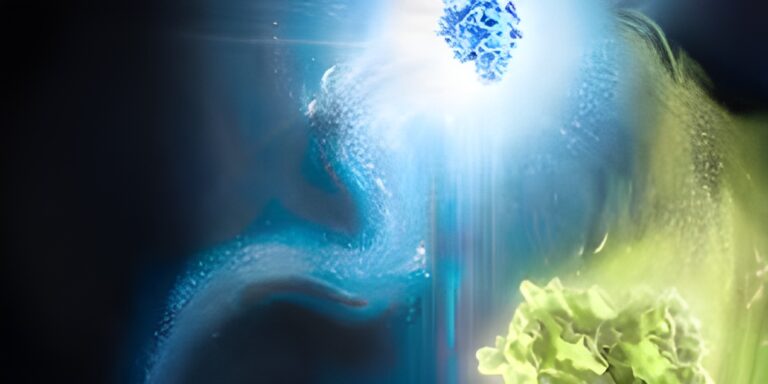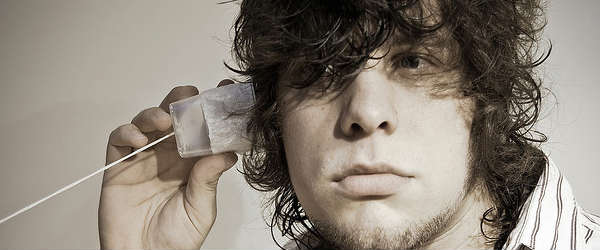Drosophila melanogaster (aka the fruit fly) is an ideal model organism for geneticists; researchers love ’em because they can be genetically manipulated pretty easily, and effects can be observed quickly. These insects are obviously very different from humans, but many of their genes have orthologs to the genes in vertebrates, making them ideal for genetic research.
When I started out in fruit fly genetics research, I loved learning the Drosophila gene names, which can be pretty creative, shall we say! The names picked by researchers tend to relate to a physiological or physical attribute caused by the mutant gene.
Here are some of my favorite Drosophila gene names and their functions.
14 of the Best Drosophila Gene Names
14. Hedgehog
This gene is a Drosophila segment polarity gene involved in patterning and growth in a number of Drosophila organs. Mutant larvae have an excess of denticles along their anteroposterior axis, which are reminiscent of a hedgehog’s spines. [1]
13. Swiss Cheese
Flies with swiss cheese mutations develop normally as larvae but experience glial hyperwrapping and brain degeneration in pupal and adult life stages, which ultimately leads to reduced lifespan. The brains of mutant flies are full of holes (known as vacuoles), much like Swiss cheese. [2]
12. Boss (Bride Of Sevenless)
The boss gene encodes a cell-surface receptor tyrosine kinase, which helps in photoreceptor cell (R cell) development in the Drosophila compound eye. Cells in flies with a boss gene mutation fail to differentiate into a specific photoreceptor cell type called an R7 cell, which is one of the eight photoreceptors that make up the Drosophila compound eye. [3] Bride of Sevenless is the ligand that binds to sevenless [4,5] and is thus married to it.
11. Dachshund
The dachshund gene encodes a nuclear protein that is required for the normal development of the Drosophila eye and leg. Mutations in this gene result in flies that have shortened legs, thus resembling dachshunds, [6], as well as in flies with no eyes.
10. 18 Wheeler
This gene encodes a Toll-like receptor (TLR), with mutations resulting in defects in salivary gland invagination. [7] This Drosophila gene gets its name from the segmented expression pattern, which is thought to resemble a tarpaulin covering an 18-wheeler truck.
9. Van Gogh
Van Gogh is a tissue polarity gene, and mutations affect the polarity of adult Drosophila cuticular structures. This results in the swirling of hair on the wing, which looks similar to Van Gogh’s style of painting. [8]
8. Clown
The clown gene is important in development, and flies carrying mutations in this gene have an altered neuronal differentiation pattern. The number of pigment cells increases in clown mutants, which means that their eyes are a mosaic of white and red. [9,10]
7. Halloween Genes
This set of Drosophila genes encode P450 enzymes that are involved in the synthesis of steroid hormones and include the ghost, spook, shadow, shade, shroud, disembodied, mummy, and phantom genes. [11] Halloween gene mutations cause the exoskeleton to develop abnormally (flies with a mutation in disembodied have no differentiation between the head skeleton and cuticle, for example) and, ultimately, the fly embryos to die.
6. Tinman
Lots of Drosophila genes take their names from literature. The tinman gene encodes a transcription factor that is involved in the formation of the heart and dorsal vascular musculature. Flies with mutations in this gene have no heart, just like the poor old Tinman from Oz. [12,13]
5. Dreadlocks
The dreadlocks gene encodes an adapter protein that is involved in targeting and photoreceptor axon guidance. The R-cell projections in dreadlocks gene mutants are disorganized, first fanning out and then clumping together. [14]
4. Indy (I‘m Not Dead Yet)
The indy gene encodes for an intermediate plasma membrane transporter protein in the Krebs Cycle. Some studies have shown that flies with mutations in this gene (i.e. reduced indy expression) have longer than average lifespans. [15,16] However, these findings have been contested, with some reports suggesting that the mutation doesn’t result in increased longevity when genetic background effects are removed. [17]
3. Lush
Flies with a mutant lush gene are unusually attracted to ethanol, propanol, and butanol but have normal chemosensory responses to other odorants. [18] Ethanol is the most abundant alcohol in the fermenting plant matter on which Drosophila feed and lay their eggs, but high levels of exposure to ethanol can cause intoxication and death. It’s thought that lush is required to help flies avoid dangerously high levels of alcohol.
2. Ken and Barbie
This gene encodes a putative transcription factor that functions in terminalia development in the fruit fly. Mutations in this gene result in fruit flies that lack external genitalia, just like our faithful Ken and Barbie dolls. [19]
For more on gender reveals in fruit flies, see our article on sexing fruit fly larvae.
1. Cheap Date
Flies with a mutation in this gene are extremely susceptible to alcohol, so they are being used by researchers to investigate genetic factors that influence alcoholism in humans. [20] Flies exposed to ethanol tend to exhibit similar behaviors to drunken humans and rodents. cheapdate is a mutant allele of the amnesiac gene, which causes memory impairment. [21]
Drosophila Gene Names: Renaming Genes
There are lots more quirky gene names – hamlet, kryptonite, mothers against drosophila – but the process of naming Drosophila genes has come under scrutiny when human genes are named identically for their Drosophila homologs/orthologs. Some of the genes can cause malformations in humans, and, in such cases, the gene names can seem offensive or insensitive. So lunatic fringe is now known as LFNG, and sonic hedgehog as SHH, for example. For more on gene nomenclature in humans, you can check out the HUGO Gene Nomenclature Committee website.
Having said that, the tradition of naming Drosophila genes for a physical/physiological attribute arguably makes those genes more memorable for researchers. We’d love to hear your thoughts in the comments.
References
- Nüsslein-Volhard C et al. (1980) Mutations affecting segment number and polarity in Drosophila. Nature. 287:795–801.
- Kretzschmar D et al. (1997) The swiss cheese mutant causes glial hyperwrapping and brain degeneration in Drosophila. J Neurosci. 17:7425–32.
- Reinke R et al. (1988) Cell-cell interaction in the Drosophila retina: the bride of sevenless gene is required in photoreceptor cell R8 forR7 cell development. Cell 55:321–30.
- Harris WA et al.(1976) Genetic dissection of the photoreceptor system in the compound eye of Drosophila melanogaster. J Physiol. 256:415–39.
- Tomlinson A et al. (1986) Sevenless: a cell-specific homeotic mutation of the Drosophila eye. Science. 231:400–2.
- Mardon G et al. (1994) dachshund encodes a nuclear protein required for normal eye and leg development in Drosophila. Development. 120:3473–86.
- Kolesnikov T et al. (2007) 18 wheeler regulates apical constriction of salivary gland cells via the Rho-GTPase-signaling pathway. Dev Biol. 307:53–61.
- Taylor J et al. (1998) Van Gogh: a new Drosophila tissue polarity gene. 150:199–210.
- Wemmer T et al. (1995). A genetic analysis of the Drosophila closely linked interacting genes bulge, argos and soba. Genetics. 140:629–41.
- Taguchi A et al. (2000) Mutations modulating the Argos-regulated signaling pathway in Drosophila eye development.Genetics. 154:1639–48.
- Gilbert LI (2004) Halloween genes encode P450 enzymes that mediate steroid hormone biosynthesis in Drosophila melanogaster. Mol Cell Endocrinol. 215:1–10.
- Bodmer R et al. (1990) A new homeobox-containing gene, msh-2, is transiently expressed early during mesoderm formation in Drosophila. Development. 110:661–9.
- Bodmer R (1993) The gene tinman is required for specification of the heart and visceral muscles in Drosophila. Development. 118:719–29.
- Garrity PA (1996) Drosophila photoreceptor axon guidance and targeting requires the dreadlocks SH2/SH3 adapter protein. Cell. 85:639–50.
- Rogina B et al. (2000) Extended life-span conferred by cotransporter gene mutations in Drosophila. Science 290:2137–40.
- Neretti N et al. (2009) Long-lived Indy induces reduced mitochondrial reactive oxygen species production and oxidative damage. PNAS 106:2277–82.
- Toivonen JM et al. (2007) No Influence of Indy on Lifespan in Drosophila after Correction for Genetic and Cytoplasmic Background Effects. PLoS Genetics3:e95.
- Kim MS et al. (1998) LUSH odorant-binding protein mediates chemosensory responses to alcohols in Drosophila melanogaster. 150:711–21.
- Lukacsovich T et al. (2003) The ken and barbie gene encoding a putative transcription factor with a BTB domain and three zinc finger motifs functions in terminalia development of Drosophila. Arch Insect Biochem Physiol. 54:77–94.
- Moore MS et al. (1998) Ethanol intoxication in Drosophila: Genetic and pharmacological evidence for regulation by the cAMP signaling pathway. Cell. 1998 93:997–1007.
- Quinn WG et al. (1979) The Drosophila memory mutant amnesiac. 277:212–4.
Originally published March 2, 2015. Reviewed and updated April 2021.







